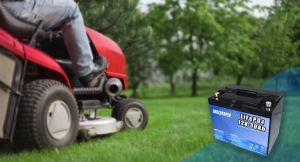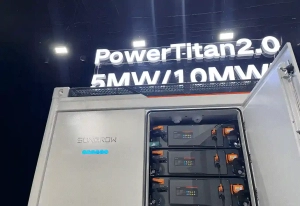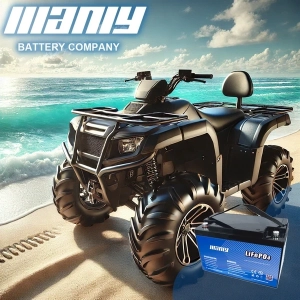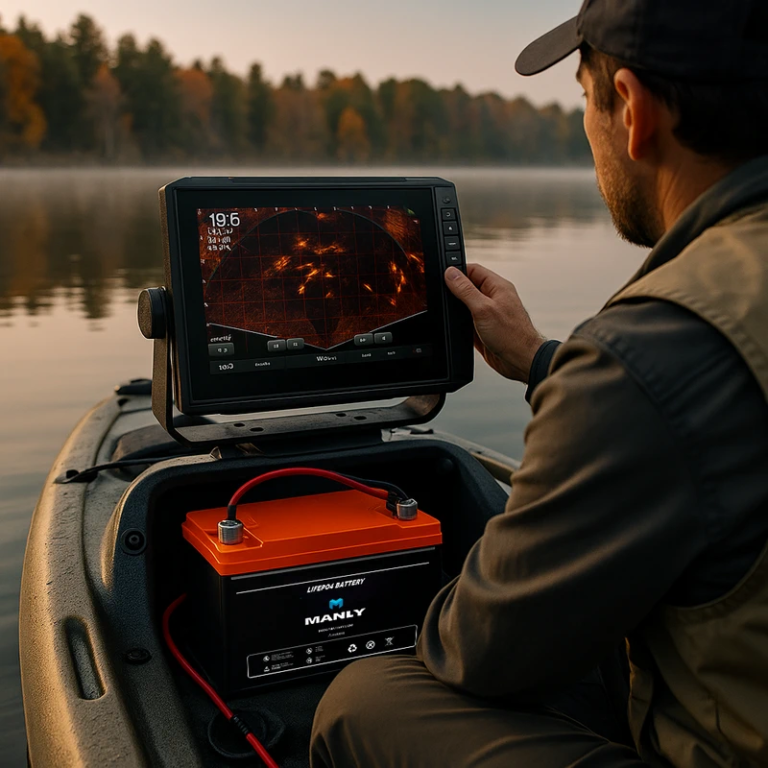Aumente la eficiencia en 2023: por qué su empresa necesita baterías LiFePO4
Tabla de contenido
- Aumente la eficiencia en 2023: por qué su empresa necesita baterías LiFePO4
- 1. Desentrañando los conceptos básicos: ¿Qué son las baterías LiFePO4?
- 2. Distinguir las diferencias: ¿Son todas las baterías LiFePO4 iguales?
- 3. De los automóviles a la energía solar: explorando los usos de las baterías LiFePO4
- 4. Mantenerse encendido: ¿Cuánto duran realmente las baterías LiFePO4?
- 5. Aumento del rendimiento: ¿Se pueden conectar baterías LiFePO4 en paralelo?
- 5.1 Comprensión de la conexión en paralelo de baterías LiFePO4
- 5.2 Factores que contribuyen al desequilibrio actual en la conexión en paralelo
- 5.3 Consideraciones para la conexión en paralelo de baterías LiFePO4
- 5.4 Los riesgos de mezclar baterías nuevas y viejas
- 5.5 Baterías de Aolithium LiFePO4 y conexión en paralelo
- 6. Ajuste perfecto: determinar qué tamaño de batería LiFePO4 necesito
- 7. Mito o realidad: ¿explotan las baterías LiFePO4?
- 8. Principales fabricantes de energía: ¿quién produce las mejores baterías LiFePO4?
1. Desentrañando los conceptos básicos: ¿Qué son las baterías LiFePO4?
If you're exploring battery technologies, one type you'll come across is the Batería de fosfato de hierro y litio (LiFePO4 o LFP). These rechargeable powerhouses are winning people over with their safety, efficiency, and impressive lifespan. They're the new kids on the block in the world of lithium-ion batteries, and they're turning heads in diverse applications - think off-grid energy storage, electric vehicles, portable electronics, and backup power systems.What makes LiFePO4 batteries stand out? Well, they're remarkably low-maintenance and can last a decade or more, depending on how you use them. They're also making a mark as the leading lithium battery technology, thanks to their unique chemical makeup. You see, unlike traditional lithium-ion batteries, these bad boys are free of nickel and cobalt.But, don't think all lithium batteries are made equal. From Lithium Cobalt Oxide (LiCoO2) and Lithium Manganese Oxide (LiMn2O4) to Lithium Nickel Manganese Cobalt Oxide (LiNiMnCoO2 or NMC) and Lithium Nickel Cobalt Aluminium Oxide (LiNiCoAlO2), the lithium battery landscape is diverse.In the coming sections, we'll dive deeper into LiFePO4 batteries, exploring their origin, benefits, and technical aspects. Stick around if you're keen on understanding why they're being hailed as the best electricity storage solution for various consumer applications.2. Distinguir las diferencias: ¿Son todas las baterías LiFePO4 iguales?
LiFePO4 batteries may appear identical, but they hold a lot of diversity. Differences span from shapes to current grades and functions, making each unique in its own way.Shape wise, LiFePO4 batteries come as Cylinder Cells, Prismatic Cells, and Pouch Cells. Cylinder cells are the oldest, safest and most consistent, preferred for small applications like power banks and drones. In contrast, Prismatic cells, with their high capacity and square shape, find favor in energy storage applications. Pouch cells, light and customizable, are seen in smartphones, drones and even the military field.The current grade in LiFePO4 batteries differs too. While 1C batteries appear mostly in energy storage, 2C/3C cells cater to higher power needs. For high instant power and fast charging, we turn to 5C and above cells, commonly seen in UPS and electric vehicles.Lastly, LiFePO4 batteries differ in design and applications. Monoblock LiFePO4 Batteries replace original lead-acid batteries in small solar systems, RVs, ships etc. On the other hand, Modular LiFePO4 batteries, built with a communication module, are suitable for large-scale energy needs. Residential LiFePO4 batteries are designed for home energy storage systems, while high rate LiFePO4 batteries power up motors requiring higher currents.In essence, all LiFePO4 batteries are not the same. Identifying these differences helps you choose the right battery for your specific need.3. De los automóviles a la energía solar: explorando los usos de las baterías LiFePO4
3.1 Energía confiable para su vehículo recreativo
Consider your RV as a mobile home that requires a dependable power source for your daily comfort. Initially, lead-acid batteries were the primary power source. However, the introduction of LiFePO4 lithium batteries marked a significant improvement. These batteries outlive their predecessors by a long shot, generally providing power to your RV for over a decade compared to a 2-4 year lifespan of a lead-acid battery.When considering batteries for an RV, it's important to consider the specific power requirements and usage. Here are LiFePO4 batteries options with different amp ratings that are commonly used in RV applications:batería de litio de 12 voltios:
- Batería de ciclo profundo de 12 V y 100 Ah
- bateria de litio 12 V y 200 Ah
- Batería AGM de 12V y 150Ah
- Batería de gel de 12 V y 80 Ah
- bateria de litio 12 V y 300 Ah
- Batería de ciclo profundo de 12 V y 120 Ah

3.2 Las mejores baterías Boondocking
LiFePO4 batteries are more reliable in extreme weather conditions, making them ideal for boondocking. Some models come with a built-in heater that warms the battery in freezing temperatures to allow safe charging. These heated lithium batteries prove useful in cold-weather camping, ice fishing, off-grid cabins, and as a reliable emergency power source throughout the year.3.3 Batería más ligera para barcos
If you're looking to boost your boat's speed and agility, consider swapping your current battery for a lightweight LiFePO4 lithium battery. They're about 70% lighter than lead-acid batteries but deliver an equal punch of energy, making them a practical choice for boating enthusiasts.3.4 La opción más rápida para su carrito de golf
Golf carts and similar lightweight vehicles can reap the benefits of LiFePO4 batteries. These batteries not only enhance the vehicle's speed and agility but also boast a charging speed up to 500 times faster than lead-acid batteries. This speedy charge time means forgetting to charge your battery overnight won't put a damper on your golf trip. When considering batteries for a golf cart, typically Batería LiFePO4 de 36 VyBatería LiFePO4 de 48 Vson usados.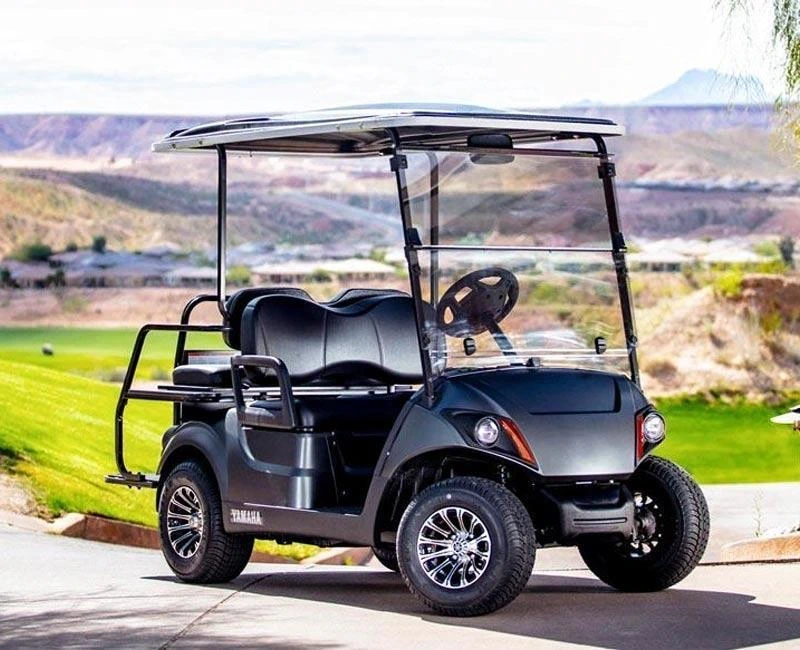
3.5 Almacenamiento seguro de energía solar
Solar power provides an eco-friendly way to enjoy the essentials while camping or living off-grid. To effectively store this energy, LiFePO4 batteries come in handy. They charge quickly using solar's low-resistance charge, unlike lead-acid batteries.
3.6 Baterías comerciales confiables
In the commercial sector, LiFePO4 batteries prove their worth in powering a range of machines from floor sweepers to small forklifts. The most significant advantage here is the lightning-fast charge time. Time is money when it comes to getting a job done, and the energy-saving feature of these batteries allows your machines to operate at their maximum potential.3.7 Baterías LiFePO4: usos más comunes
While it's challenging to pinpoint the most common use for lithium batteries due to their increasing popularity, their current primary use seems to be for outdoor applications. This is primarily due to their unmatched reliability. They can withstand high temperatures up to 70°C and lows of -30°C (140℉ to -4℉). High-quality LiFePO4 batteries come with an inbuilt battery management system that safeguards the battery from unsafe conditions.So, whether you're considering using a LiFePO4 battery for your RV, boat, kayak, or solar setup, know that you'll be joining many smart consumers opting for a more reliable and efficient power source.4. Mantenerse encendido: ¿Cuánto duran realmente las baterías LiFePO4?
4.1 La vida útil de las baterías LiFePO4
Designed with a 10-year maximum lifespan, LiFePO4, or LFP batteries, boast longevity that outperforms many counterparts. Offering approximately 5,000 cycles at an 80% depth of discharge, they surpass the endurance of lead-acid batteries. This longevity is a major factor that makes LFP batteries the preferred choice in various applications.However, it's essential to note that several factors impact the lifespan of LiFePO4 batteries. These factors include depth of discharge and operating temperature. Therefore, proper battery maintenance plays a critical role in increasing their lifespan.4.2 El impacto de la calidad y el tipo en la duración de la batería
Generally, the lifespan of a lithium battery ranges from two to over ten years, depending on its quality and type. Affordable lithium-ion batteries typically offer between 500 and 3000 life cycles. In contrast, premium Lithium Iron Phosphate (LFP) batteries provide anywhere from 3500 to over 4000 cycles.External factors also influence battery performance and lifespan. Therefore, following proper storage and usage guidelines can protect and preserve your batteries, extending their longevity. When not in use, store batteries in a cool, dry place away from direct sunlight and heat. Follow the manufacturer's instructions when recharging to avoid overcharging and misconfigurations, which can negatively impact battery life.4.3 Baterías LiFePO4 frente a baterías de plomo-ácido
The longevity of LiFePO4 batteries stems from the material properties of lithium iron phosphate as opposed to lead acid. On average, LiFePO4 batteries offer between 2,000 and 5,000 charge and discharge cycles without compromising their performance. In contrast, lead-acid batteries can only muster between 200 to 500 cycles.In essence, LiFePO4 batteries can provide reliable power for 5 to 10 years, while lead-acid batteries typically require replacement every 1-3 years. Researchers have conducted comparative analyses, revealing that LiFePO4 batteries suffer lower losses, offer longer cycle life, and exhibit lower storage depletion rates than lead-acid batteries. This makes them a more efficient choice for powering microgrid systems.In conclusion, with their impressive lifespan, LiFePO4 batteries provide a sustainable and efficient solution for those in need of long-term, reliable power. However, proper handling and maintenance are key to ensuring that these batteries reach their full lifespan potential.5. Aumento del rendimiento: ¿Se pueden conectar baterías LiFePO4 en paralelo?
5.1 Comprensión de la conexión en paralelo de baterías LiFePO4
To begin with, it's essential to understand that when two or more lithium iron phosphate batteries are connected in parallel, the current flowing through each battery won't be precisely the same. This imbalance increases as the load grows larger, and becomes more pronounced as the number of cells connected in parallel increases. This is due to each cell's unique internal resistance, affecting the rate at which it receives and generates power.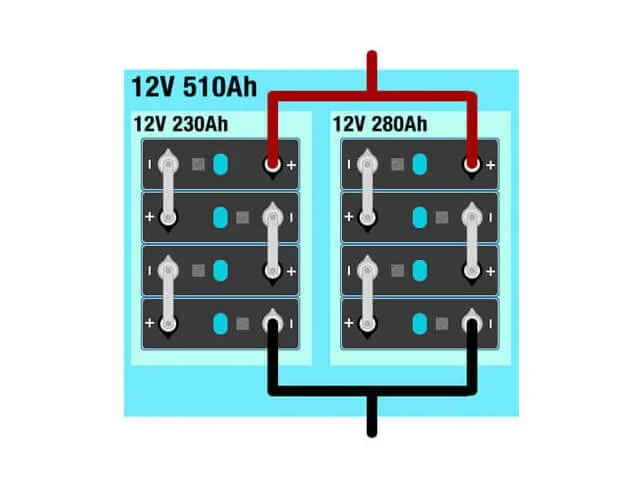
5.2 Factores que contribuyen al desequilibrio actual en la conexión en paralelo
The current imbalance between cells after parallel connection is caused by various factors. These include differences in cell and battery manufacturing processes, discrepancies in cell connection resistance, and temperature variations between cells. As such, the State of Charge (SOC) of each LiFePO4 cell connected in parallel may differ from the others for most of the battery system's life.In some situations, abnormally high eddy currents may flow between cells, causing the cells to enter an unpredictable protection mode. Though a Battery Management System (BMS) can manage parallel bypass current imbalance and eddy current runaway, it does not resolve the problem entirely.5.3 Consideraciones para la conexión en paralelo de baterías LiFePO4
If you're considering connecting batteries in parallel, keep the following considerations in mind:5.3.1 Garantizar la uniformidad en las baterías
Do not mix different brands, capacities, or ages of batteries. The batteries being connected should have identical internal resistance, capacity, voltage, and brand. Mixing batteries of different capacities can cause current imbalance and lead to overheating, affecting the entire electrical system.5.3.2 Cargue completamente las baterías
Ensure that all LiFePO4 batteries to be connected in parallel are individually fully charged. This creates a balanced state, maximizing your overall usage time.5.3.3 Utilice cables de conexión adecuados
The cable sizes should be suitable for carrying the required current. They should match the size of your maximum requirements and ideally, should be as short as possible. Also, the cables connecting the batteries should be large enough to carry the total current of the system.5.3.4 Conexión adecuada de la batería
Finally, connect the positive terminals together and perform the same operation for the negative terminals. The positive terminal of the first cell and the negative terminal of the last cell should be connected to the system.5.4 Los riesgos de mezclar baterías nuevas y viejas
Connecting old and new batteries in parallel can be problematic. As batteries age, their internal resistance gradually becomes unbalanced. The newer battery, having a lower internal resistance than the old one, charges and discharges at a higher current than the other battery, aging faster to reach a similar state as the older battery. This affects the service life of the new battery.5.5 Baterías de Aolithium LiFePO4 y conexión en paralelo
Aolithium batteries can be connected in parallel under certain conditions. The batteries should be of the same capacity, from the same batch, brand new, and fully charged before paralleling. It's the only way to ensure the internal characteristics of the batteries are similar, making them suitable for parallel connection. Connecting two batteries at a time, preferably bought simultaneously, is the best option for those planning to connect the batteries in parallel.In conclusion, the parallel connection of LiFePO4 batteries can boost performance and power. However, care must be taken to ensure the batteries are compatible and handled correctly to prevent damaging the batteries or the entire electrical system.6. Ajuste perfecto: determinar qué tamaño de batería LiFePO4 necesito
6.1 Comprensión de la aplicación y los requisitos de energía
When choosing the size of a LiFePO4 battery, the first step is identifying the application, such as your car, 4WD, caravan, boat, or RV. Then, you need to determine how much power you need and for how long. For instance, if your application draws 10 Amps for 10 hours, you will need at least a 100Ah battery. However, to ensure a long battery life, it's advisable to aim for a lower discharge level.6.2 Las realidades de las baterías de litio
Lithium batteries can seem like a magical energy source that can produce endless power, especially when compared to old lead-acid batteries. However, the reality is a bit different. Two key points to remember are: the deeper you discharge a lithium battery, the shorter its cycle life; and the faster you charge a lithium battery, the shorter the battery life.6.3 La importancia de dimensionar correctamente la batería
LiFePO4 batteries are different from lead-acid batteries in that you can discharge them much further and still get a long life. However, if you constantly discharge them to 100%, you seriously reduce the cycle life. Conversely, at 50%, you can get an extremely long life.As such, correctly sizing your battery for your application is important for ensuring a system that will last long enough to justify the higher cost of lithium. Using the example of a 100Ah draw over 10 hours, a 120Ah battery could provide some buffer, reducing the depth of discharge point from 100% to closer to 80%. Alternatively, a 200Ah battery would only need to be discharged to 50%, leading to a significantly longer life.6.4 Las ventajas de las baterías de litio
One of the great things about lithium batteries is that the whole battery capacity is usable. Yes, repeatedly using the full capacity can shorten the life, but nowhere near as much as with traditional lead-acid batteries, which don't like being discharged more than 50%. With lithium, if you need the extra power, you can use it!7. Mito o realidad: ¿explotan las baterías LiFePO4?
7.1 Comprensión de los peligros potenciales
LiFePO4 batteries are generally safe for use under normal conditions. However, in extreme cases, issues can arise that might lead to dangerous situations, potentially even explosions. These include overcharging, the material composition of the battery, and where the battery is placed while charging.Overcharging can lead to internal heat buildup in the battery, which could cause a fire if the battery is insulated and the heat can't escape. The battery's material also impacts its thermal and structural stability. Furthermore, charging batteries in combustible environments can lead to fires, even with small heat generation.7.2 Medidas Preventivas
Preventing such hazardous situations involves using an appropriate charger for your battery type and voltage rating. This can help avoid overcharging and heat generation. Additionally, storing and charging your batteries at suitable temperatures (generally between 15 °C and 30 °C) can prevent overheating.Employing a good Battery Management System (BMS) is also crucial when using battery packs with multiple LiFePO4 cells. A BMS can halt charging at peak voltage and charge each cell individually, detecting any cells that are malfunctioning.Finally, sourcing your batteries from reputable manufacturers is a good practice to ensure pre-production tests have been adequately conducted. One such manufacturer, nRuiT-Power, an authorized CATL energy storage system integrator, offers high-quality lithium battery energy storage solutions.8. Principales fabricantes de energía: ¿quién produce las mejores baterías LiFePO4?
Baterías nacidas en la batalla
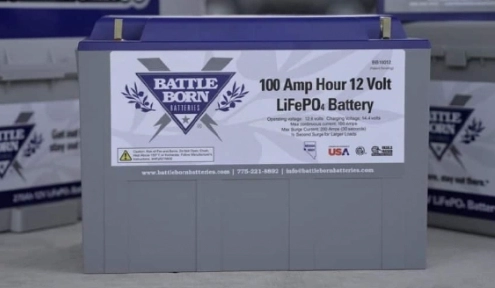 Battle Born Batteries, based in the US, is a leading company that designs, develops, and manufactures lithium-ion batteries. They offer a wide range of deep-cycle batteries specifically designed for marine, RV, off-grid, and backup power systems, known for their exceptional reliability and durability. These batteries have notable strengths: advanced lithium-ion technology providing high energy density in a compact and lightweight package, a long lifespan with cutting-edge overcharging prevention, fast charging capabilities, deep discharge capability, and a focus on safety and environmental friendliness. However, it's important to consider their weaknesses, including a higher cost compared to other options, sensitivity to extreme temperatures, and the requirement for a specialized charger. Choose Battle Born Batteries for advanced lithium-ion power solutions that prioritize performance, durability, and environmental consciousness.
Battle Born Batteries, based in the US, is a leading company that designs, develops, and manufactures lithium-ion batteries. They offer a wide range of deep-cycle batteries specifically designed for marine, RV, off-grid, and backup power systems, known for their exceptional reliability and durability. These batteries have notable strengths: advanced lithium-ion technology providing high energy density in a compact and lightweight package, a long lifespan with cutting-edge overcharging prevention, fast charging capabilities, deep discharge capability, and a focus on safety and environmental friendliness. However, it's important to consider their weaknesses, including a higher cost compared to other options, sensitivity to extreme temperatures, and the requirement for a specialized charger. Choose Battle Born Batteries for advanced lithium-ion power solutions that prioritize performance, durability, and environmental consciousness.Batería troyana
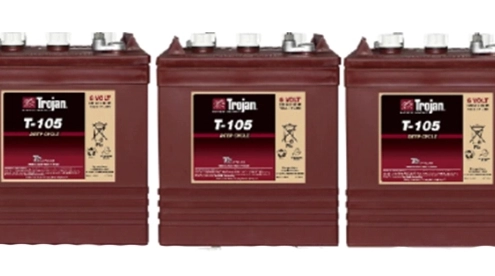 Trojan Battery Company, a prominent manufacturer headquartered in Santa Fe Springs, California, specializes in deep-cycle batteries for golf carts and renewable energy systems. Their batteries possess notable strengths: renowned longevity and durability, ensuring reliable performance over many years, high efficiency and consistent power output, dependable operation in various applications, environmental friendliness through the use of recyclable materials and sustainable lead-acid chemistry, and exceptional customer support. However, it's important to consider their weaknesses, including a higher price point compared to other brands, a potentially shorter warranty period, and the possibility of sulfation if not properly maintained. Choose Trojan Battery for durable and high-performing power solutions, supported by excellent customer service and a commitment to environmental sustainability.
Trojan Battery Company, a prominent manufacturer headquartered in Santa Fe Springs, California, specializes in deep-cycle batteries for golf carts and renewable energy systems. Their batteries possess notable strengths: renowned longevity and durability, ensuring reliable performance over many years, high efficiency and consistent power output, dependable operation in various applications, environmental friendliness through the use of recyclable materials and sustainable lead-acid chemistry, and exceptional customer support. However, it's important to consider their weaknesses, including a higher price point compared to other brands, a potentially shorter warranty period, and the possibility of sulfation if not properly maintained. Choose Trojan Battery for durable and high-performing power solutions, supported by excellent customer service and a commitment to environmental sustainability.Batería varonil
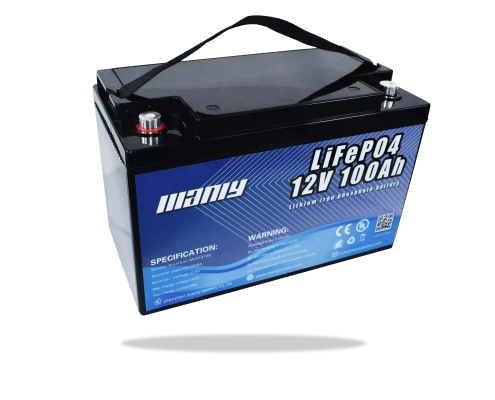 Batería varonil is a top-notch Chinese wholesale battery producer with a track record spanning over 13 years. We are professional battery manufacturer, supplier, and OEM. Impressively, We churn out more than 1.2 million cells daily. In addition, we put together 3,000 batteries daily.Our battery factory covers an area of 65,000 square meters. With strongholds in Shenzhen, Dongguan, and Huizhou, our presence is robust. We proudly back their products with a 10-year warranty.Offering LiFePO4/lithium-ion batteries, Manly Battery's range is vast, from 6V to 72V. These batteries are engineered for multiple uses. They include solar energy storage, home energy storage, industrial energy storage, and robots.Besides, Manly Battery offers customized battery services. Our multiple certifications underscore our quality commitment. We craft custom solutions spanning voltage, capacity, current size, and even appearance.Numerous certifications like UN38.3, IEC62133, UL, and CE are in our portfolio. This highlights our devotion to safety and quality. Impressively, our products have a life span extending over 8000 cycles.Our products also safeguard against short circuits and overcharging. We even offer over-discharge protection. Furthermore, a balanced circuit is integrated. Additionally, we can connect multiple series in parallel.Overvoltage and overcurrent protection are key features of their products. Crucially, our batteries remain safe even under extreme impact. Our batteries neither explode nor catch fire, showcasing our commitment to user safety.
Batería varonil is a top-notch Chinese wholesale battery producer with a track record spanning over 13 years. We are professional battery manufacturer, supplier, and OEM. Impressively, We churn out more than 1.2 million cells daily. In addition, we put together 3,000 batteries daily.Our battery factory covers an area of 65,000 square meters. With strongholds in Shenzhen, Dongguan, and Huizhou, our presence is robust. We proudly back their products with a 10-year warranty.Offering LiFePO4/lithium-ion batteries, Manly Battery's range is vast, from 6V to 72V. These batteries are engineered for multiple uses. They include solar energy storage, home energy storage, industrial energy storage, and robots.Besides, Manly Battery offers customized battery services. Our multiple certifications underscore our quality commitment. We craft custom solutions spanning voltage, capacity, current size, and even appearance.Numerous certifications like UN38.3, IEC62133, UL, and CE are in our portfolio. This highlights our devotion to safety and quality. Impressively, our products have a life span extending over 8000 cycles.Our products also safeguard against short circuits and overcharging. We even offer over-discharge protection. Furthermore, a balanced circuit is integrated. Additionally, we can connect multiple series in parallel.Overvoltage and overcurrent protection are key features of their products. Crucially, our batteries remain safe even under extreme impact. Our batteries neither explode nor catch fire, showcasing our commitment to user safety.RENOGÍA
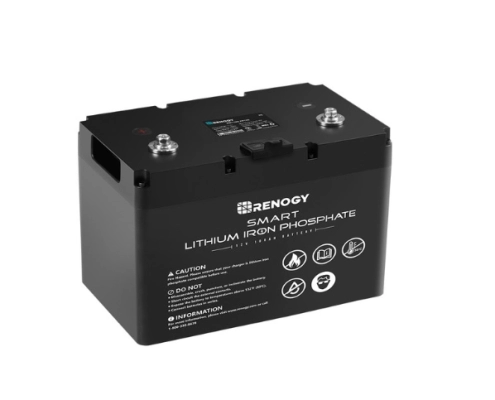 In 2010, RENOGY embarked on its journey as a small project initiated by Louisiana State University students. Fast forward to today, and RENOGY has evolved into a thriving organization that continues to grow. While the solar panel remains their flagship product, RENOGY offers a diverse range of solutions to meet various energy needs.Solar Kits: RENOGY provides comprehensive solar kits, offering everything you need to set up your solar power system conveniently.Deep Cycle LiFePO4 Battery: RENOGY offers reliable deep cycle LiFePO4 batteries, ensuring efficient energy storage for extended periods.Inverters: With RENOGY's inverters, you can convert solar energy into usable AC power for your home or business.Battery Chargers and Accessories: RENOGY also offers battery chargers and a wide range of accessories to optimize your solar energy utilization.Experience the power of RENOGY's solar solutions and embrace the renewable energy revolution.
In 2010, RENOGY embarked on its journey as a small project initiated by Louisiana State University students. Fast forward to today, and RENOGY has evolved into a thriving organization that continues to grow. While the solar panel remains their flagship product, RENOGY offers a diverse range of solutions to meet various energy needs.Solar Kits: RENOGY provides comprehensive solar kits, offering everything you need to set up your solar power system conveniently.Deep Cycle LiFePO4 Battery: RENOGY offers reliable deep cycle LiFePO4 batteries, ensuring efficient energy storage for extended periods.Inverters: With RENOGY's inverters, you can convert solar energy into usable AC power for your home or business.Battery Chargers and Accessories: RENOGY also offers battery chargers and a wide range of accessories to optimize your solar energy utilization.Experience the power of RENOGY's solar solutions and embrace the renewable energy revolution.Batería de litio Dakota
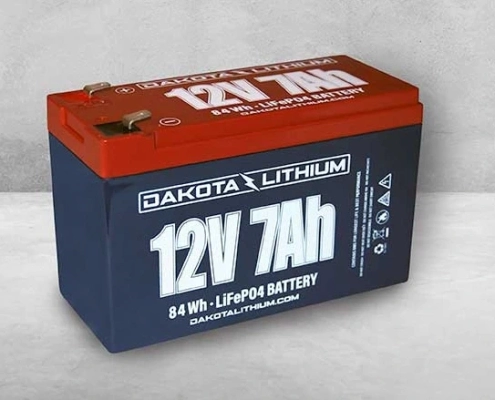 Dakota Lithium, a reputable manufacturer, specializes in producing high-quality, long-lasting lithium-ion batteries for diverse applications. Their LiFePO4 batteries boast an extended lifespan of 2,000 to 5,000 charge cycles, surpassing traditional lead-acid batteries. These batteries offer a higher energy density, enabling them to store more power in a smaller, lighter package, making them ideal for space and weight-limited situations. Additionally, they feature fast charging capabilities, ensuring quick backup and reduced downtime. With a low self-discharge rate, Dakota Lithium batteries maintain their charge for extended periods, suitable for occasional or seasonal use. Moreover, these batteries are considered safe and environmentally friendly, lacking harmful elements like lead or acid. They can function effectively across a wide range of temperatures, from -20°C to 60°C (-4°F to 140°F), making them adaptable to various climates. Equipped with a built-in Battery Management System (BMS), Dakota Lithium batteries offer protection against overcharging, over-discharging, short-circuiting, and high temperatures, ensuring longevity and safety. However, it's important to note that Dakota Lithium batteries have limited capacity options, which may restrict their suitability for certain applications. Consequently, carefully evaluate these considerations to determine the best choice for your specific needs. Choose Dakota Lithium for their many advantages in battery technology.
Dakota Lithium, a reputable manufacturer, specializes in producing high-quality, long-lasting lithium-ion batteries for diverse applications. Their LiFePO4 batteries boast an extended lifespan of 2,000 to 5,000 charge cycles, surpassing traditional lead-acid batteries. These batteries offer a higher energy density, enabling them to store more power in a smaller, lighter package, making them ideal for space and weight-limited situations. Additionally, they feature fast charging capabilities, ensuring quick backup and reduced downtime. With a low self-discharge rate, Dakota Lithium batteries maintain their charge for extended periods, suitable for occasional or seasonal use. Moreover, these batteries are considered safe and environmentally friendly, lacking harmful elements like lead or acid. They can function effectively across a wide range of temperatures, from -20°C to 60°C (-4°F to 140°F), making them adaptable to various climates. Equipped with a built-in Battery Management System (BMS), Dakota Lithium batteries offer protection against overcharging, over-discharging, short-circuiting, and high temperatures, ensuring longevity and safety. However, it's important to note that Dakota Lithium batteries have limited capacity options, which may restrict their suitability for certain applications. Consequently, carefully evaluate these considerations to determine the best choice for your specific needs. Choose Dakota Lithium for their many advantages in battery technology.
